Silence is golden on Silver Island
Once a jet-set private playground, Argironisos now welcomes a rather different clientele
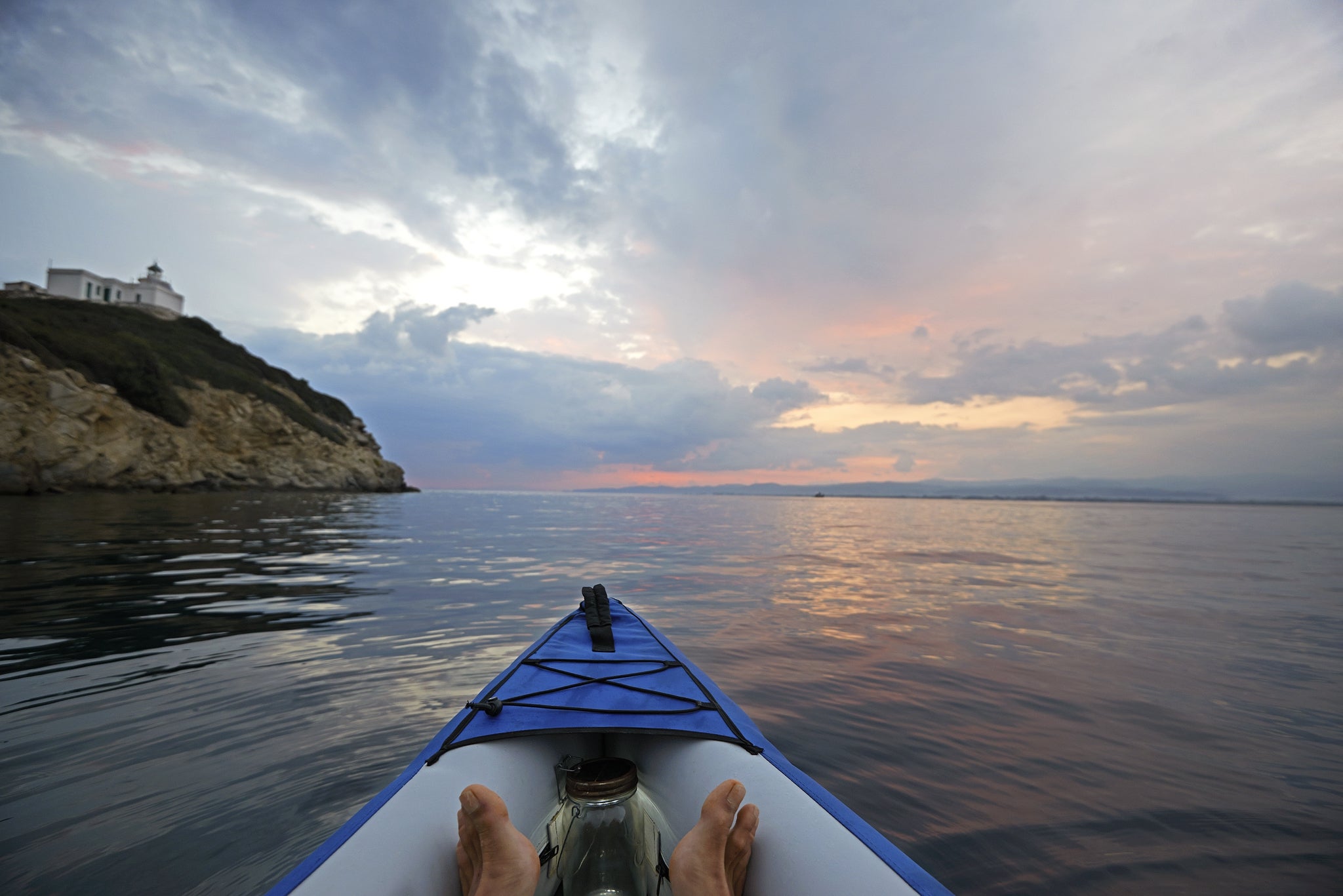
Your support helps us to tell the story
From reproductive rights to climate change to Big Tech, The Independent is on the ground when the story is developing. Whether it's investigating the financials of Elon Musk's pro-Trump PAC or producing our latest documentary, 'The A Word', which shines a light on the American women fighting for reproductive rights, we know how important it is to parse out the facts from the messaging.
At such a critical moment in US history, we need reporters on the ground. Your donation allows us to keep sending journalists to speak to both sides of the story.
The Independent is trusted by Americans across the entire political spectrum. And unlike many other quality news outlets, we choose not to lock Americans out of our reporting and analysis with paywalls. We believe quality journalism should be available to everyone, paid for by those who can afford it.
Your support makes all the difference.To my right is a still, blue sheet of sea with mountain-tops peeking out from behind; to my left, olive trees and wildflowers. Above, a pattern of branches and leaves, sun and sky, all swaying slightly as I shift on my rope mattress.
This is the secluded spot, resting on a swing bed under a big oak tree, that I have claimed as my own on Silver Island, a 60-acre, lush green slab of land that bobs in the Aegean Sea – squint to spot it on a map in between the island of Evia and the Greek mainland.
But then, it’s easy to stake out your own solitary spot if you are sharing a private island with a maximum of 10 guests, with whom (or not) to walk its circuitous pathways, or swim in its phosphorescent sea, or kayak in its pink waters at sunrise. Mainly though, you’ll do yoga, twice a day, on a circular white shala which looks a bit like a helipad (the island has one of those, but at its other end).
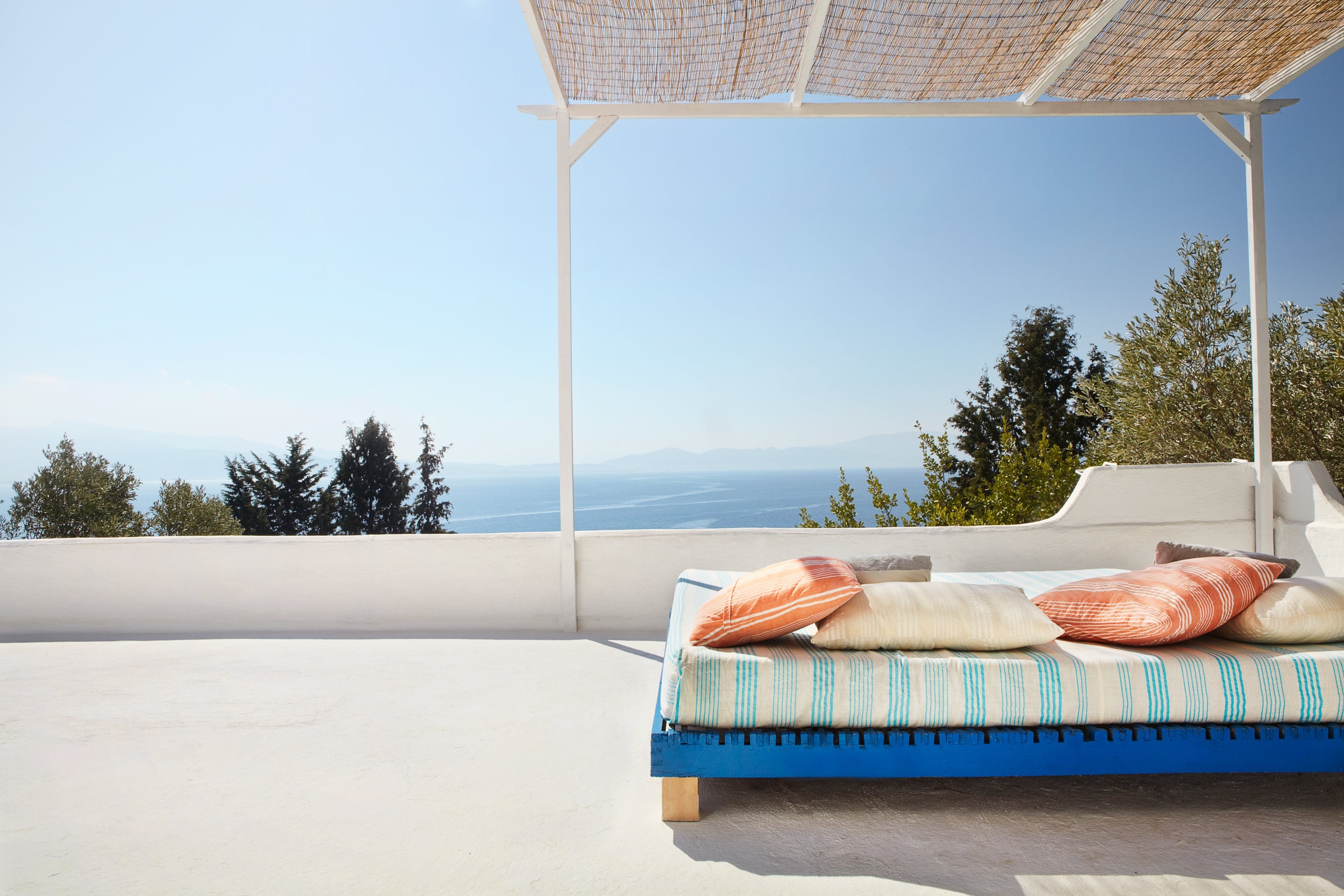
Silver Island is a yoga retreat, run on an environmentally sensitive basis. This brings me to its stern rules, and to the fact that they led me very nearly not to come: the list of “what not to bring” includes credit cards (though these currently have little use on the Greek islands that do have ATMs and shops); mosquito repellents containing deet (the island provides its own), soap or shampoo (guests are provided with biodegradable products), electrical equipment (though a couple of crafty yogis have sneaked in hair straighteners). Oh, and no laptops (because there is no internet).
In other words, Silver Island requires total disconnection. The Greek economy might be in meltdown, but out here, we would be none the wiser. The journey to the island involves a three-hour bus trip from Athens, a ferry ride to Oreoi, and then a 20-minute speedboat. The rigmarole, once the island comes into view, is more than worth the effort; and the journey is all but forgotten once you’re standing on the jetty, then walking up the rugged path to the island’s two villas. There is a white well by the central meeting area, a dinky church to its side, hammocks, lanterns, seats and tables tucked into nooks and a meditation perch high up from which to watch the sun rise.
The stern house rules also make sense, once you are in situ. The island is brimming with nature: butterflies, lizards, geckos, seagulls, owls, pheasants, hens, monk-seals, 2,500 olive trees, dazzling varieties of flora – such richness should rightly be protected. Everything is recycled, right down to leftovers from dinner and plastic packaging; electricity is solar powered and switched on for two hours a day; guests are encouraged to use water mindfully.
The banishment of the internet comes as enormous relief too, perhaps because Silver Island is such a beguiling place in which to switch off. Everything conspires towards relaxation, and a connection with the elements. We took a late night swim in a phosphorescent sea which sparkled and illuminated watery stars on movement. There was a lighthouse, from which sunrise was at its most magnificent, melting across the water. As the week progressed, the imperative to stagger awake in near darkness and make the 20-minute journey there became ever more urgent. Nothing felt more important, and more dramatic, than watching the sun rise.
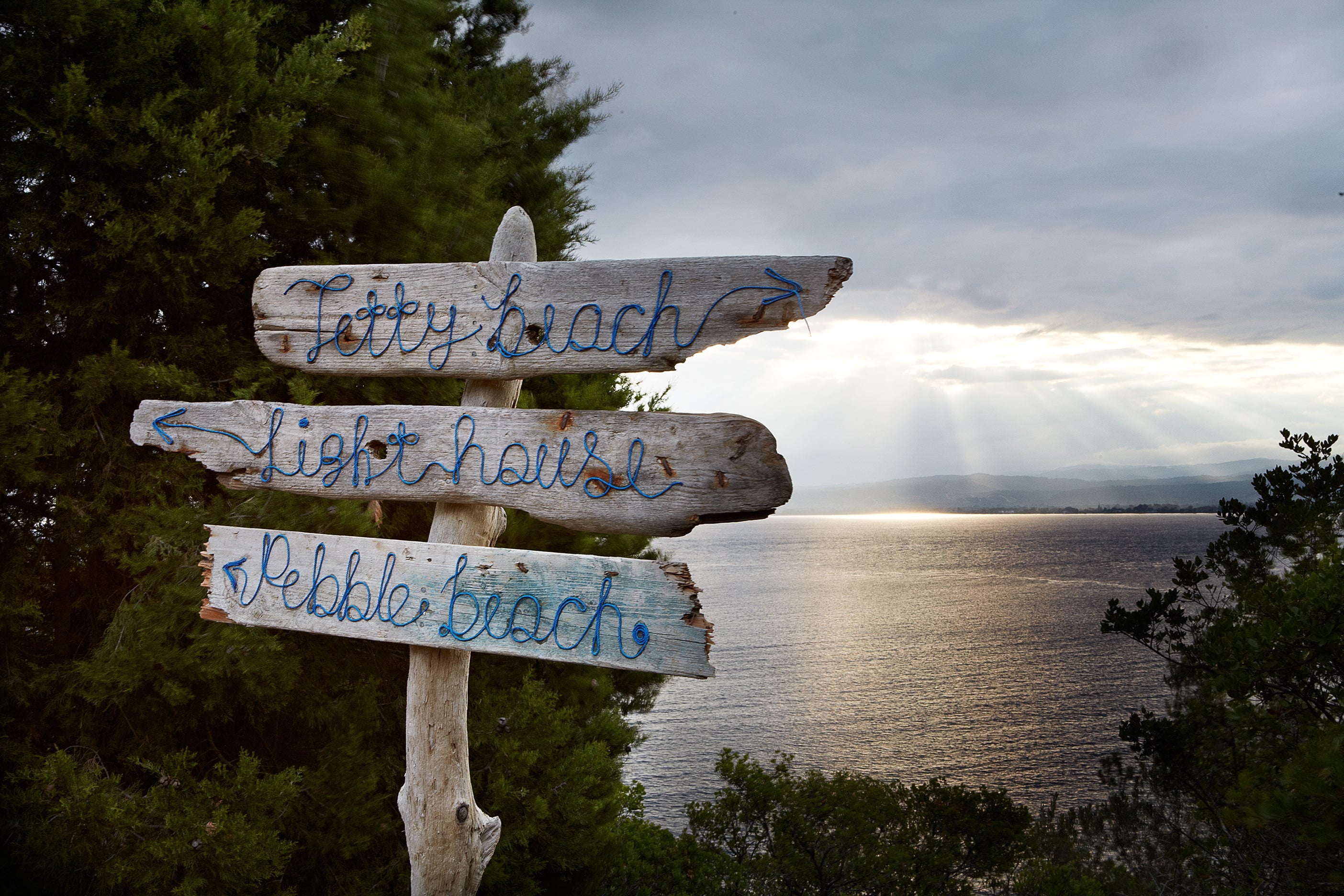
The real drama, though, came from within the group of 10 guests. Rooms are shared so if you are not travelling with a friend, you are destined – or doomed in my case – to share with a stranger. My roomie was a New Zealander, a returnee to the island who, the others told me, was a Vogue model back in the day. She was certainly tall but decidedly unsmiling on first greeting. Her room-mate last year was a snorer, she complained, and that woman ended up sleeping in the wild. I wasn’t a snorer, was I, she asked?
I most certainly wasn’t, and I wasn’t looking forward to sharing a room either. That was something I could “work on” during the week, she retorted, and with that, the friendship was off. But perhaps I did “work on it”, because I did warm to her a little, possibly out of a sense of satisfaction when, on night three, she snored the roof off. By night five, I considered sleeping under the great oak tree.
My villa was the higher-end one of the two, with three self-contained suites. The rooms are large, charming, and slightly rustic, with a roof terrace of striped deckchairs, white tables, umbrellas, and a lovely view of sea and mountain tops. I could barely hide my envy though when I was invited to the top suite which had a gigantic, roof-sized terrace and a bed on it so that on a muggy night you could sleep under the stars.
The group made for a fascinating study: my room-mate woke up at the crack of dawn and charged around island dressed in Gore Tex and hiking shoes, as if she were preparing to climb Mount Kilimanjaro. Others smoked and sunbathed until lunchtime. An Israeli couple next door took off on outings, kayaking one afternoon and schlepping up to a pretty stone beach with a cooler-bag full of beers the next. I formed a tight little circle that met under the oak, with whom I was willing to share the (sugar-laden) food I’d smuggled in. The tree was a good place to form bonds, reflect on life, and – most satisfying – gossip about the others.
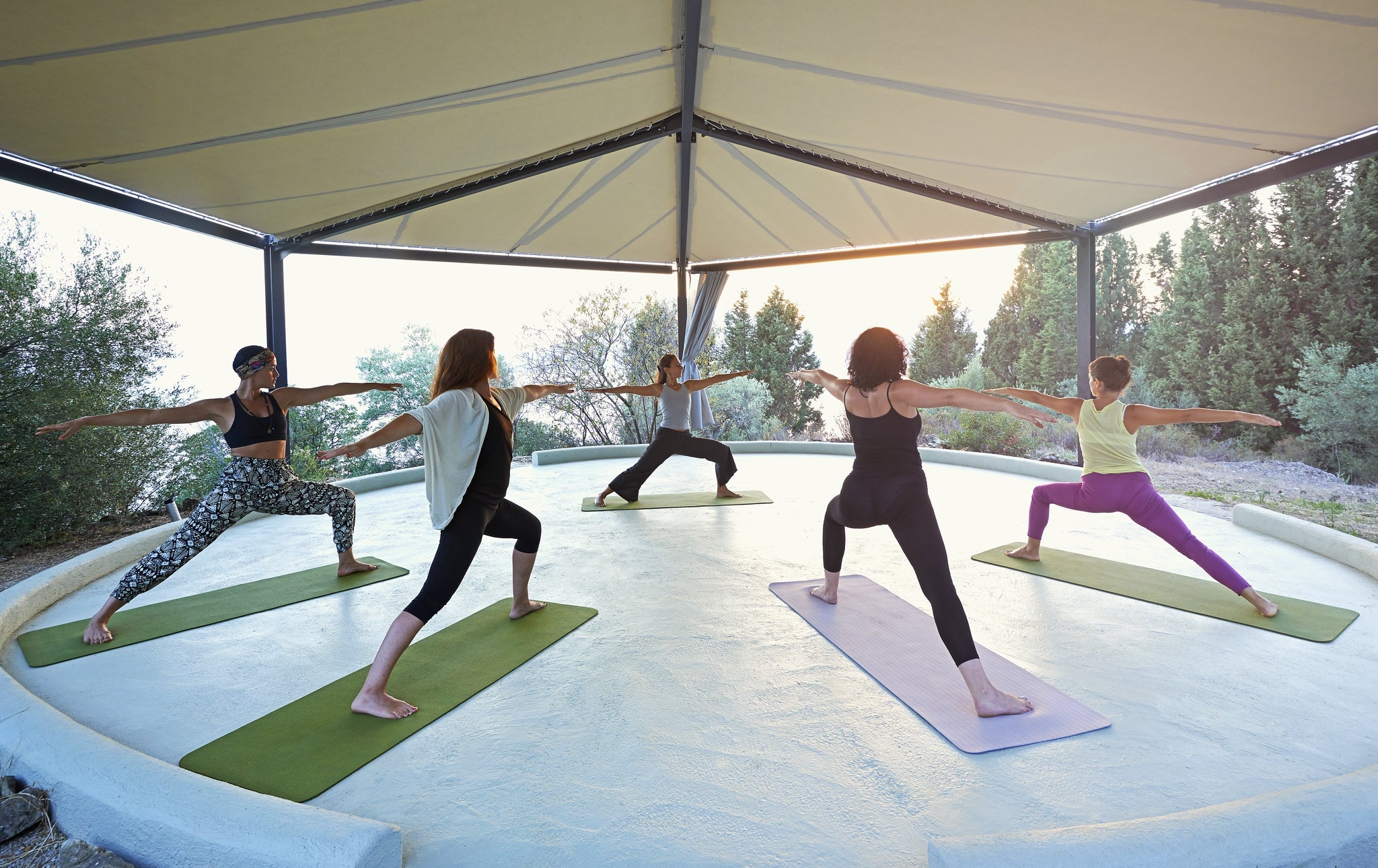
I was surprised by the camaraderie we formed, and the lessons learned in withholding from instant judgement; a young Mexican woman who worked in finance (“I make rich people richer”) talked passionately about poverty, world politics, and Chomsky, and became a fast friend. A 20-year-old gap-year student and occasional runway model from Surrey was good fun. A Swiss woman had a fantastic sense of humour, despite her limited English.
The yoga classes – one before breakfast, the other before dinner – change week to week depending on the styles and schools of visiting instructors. Ours was Lisa Jane Wright, a warm South African with a practice that combined Hatha yoga with pilates and Thai massage, and which emphasised meditation. One evening, she took us on a silent walk to a cliff edge to see the sunset; another morning, she asked us to create a mandala (a cloth drawn with circles from the Buddhist tradition) which we decorated with petals, leaves and other flotsam and then “let go” by flinging it in the air. The ritual was supposed to symbolise temporality – something I might have sneered at, had I not been moved by the “letting go” of our beautiful, ephemeral arrangement.
Two sisters – half Greek, half South African – inherited Silver Island – whose real name is Argironisos – when their father died in 2007, and they have quirky life stories which add to the charm of the place; Claire Christie, off-site in South Africa, once worked with Mother Teresa in India; Lissa Christie, who lives on the island with her husband, Corne Uys, is the former artistic producer of Bestival and her creative touch is everywhere – in the furnishings and decor of the villas and the many visual touches around the island.
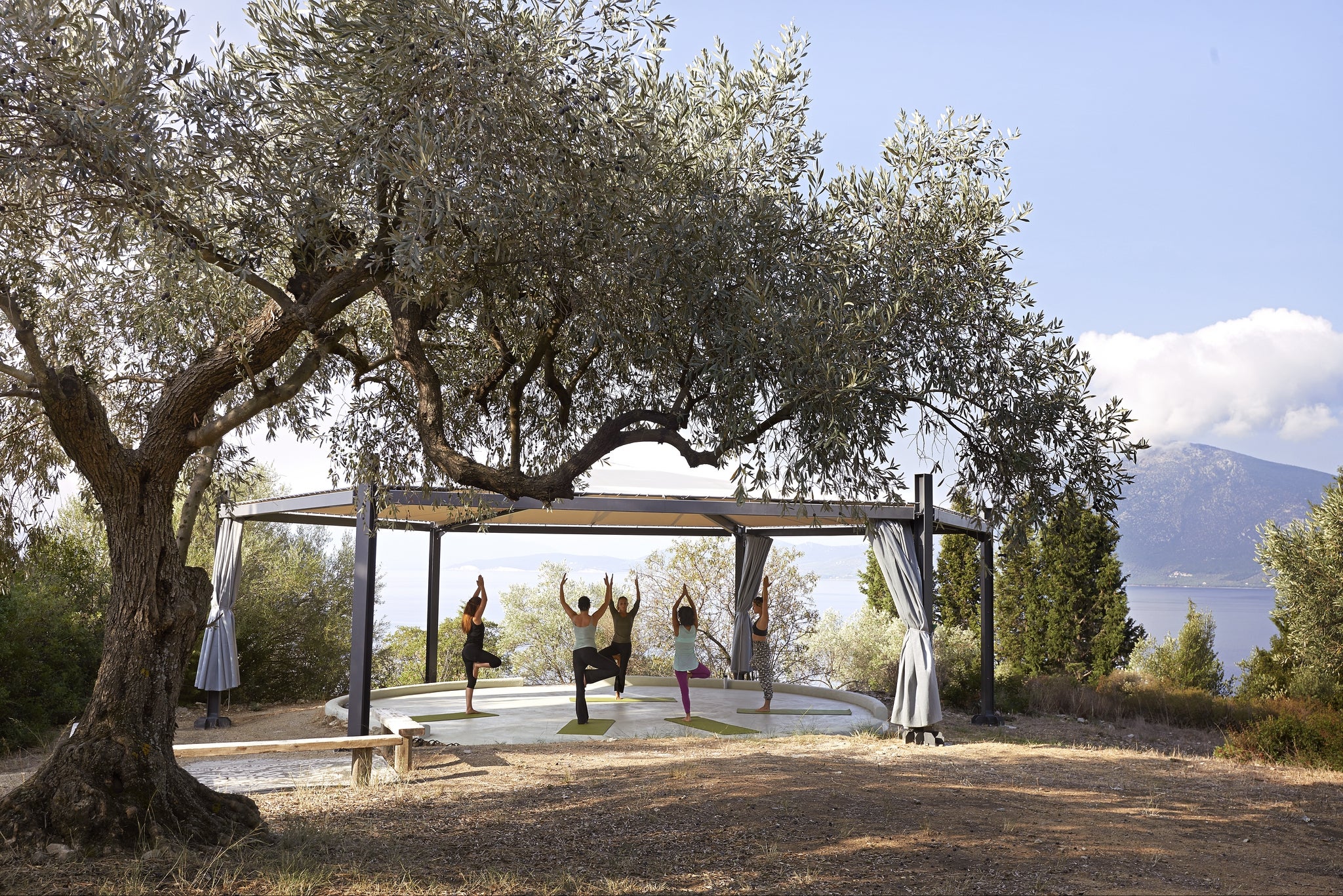
In each room, there is a book on the family’s history which begins: “Silver Island was purchased by our grandfather, Spiro Christie in 1961 ….” At that time, it had no water, no roads, no access to electricity, no jetty and only donkeys for transport. For the first 15 years, it served as a holiday home and then, in the 1970s, it was renovated and rented out as a “private island resort” with its own resident chef and captain. It became, the book says, “a playground to the rich and famous”. The helipad is the last remaining sign of that jet-set.
Its current incarnation has far more character, at least. Apart from the yoga classes, we congregated formally as a group for meals around a big table, alongside Lissa and Corne, which comprised vegetarian feasts so inordinately tasty that the couple will soon bring out a vegetarian cookbook.
All locally sourced and home-made, dishes ranged from inventive salads – red quinoa with roasted tomato and beetroot, fig syrup dressing and parmesan shavings, or pear and mint green salad. Corne’s walnut and fig bread was a hit, as was the cauliflower mash (with olive oil and almond milk) which tasted so much nicer than it looked, or sounded. Deserts came in healthy shapes, so tarte tatin was made with honey and olive oil rather than sugar and butter. There was also red and white wine made in the mountains of Evia, and from one of the oldest vineyards in the region, Liaros.
Seven days of yoga, no wi-fi, limited electricity, and the tastiest salads imaginable left me happier, healthier and possibly heavier. I went home feeling it was important to come back to Silver Island, that here I really could get away from it all; but that it was as important to take a bit of its simple life back with me too.
Join our commenting forum
Join thought-provoking conversations, follow other Independent readers and see their replies
Comments